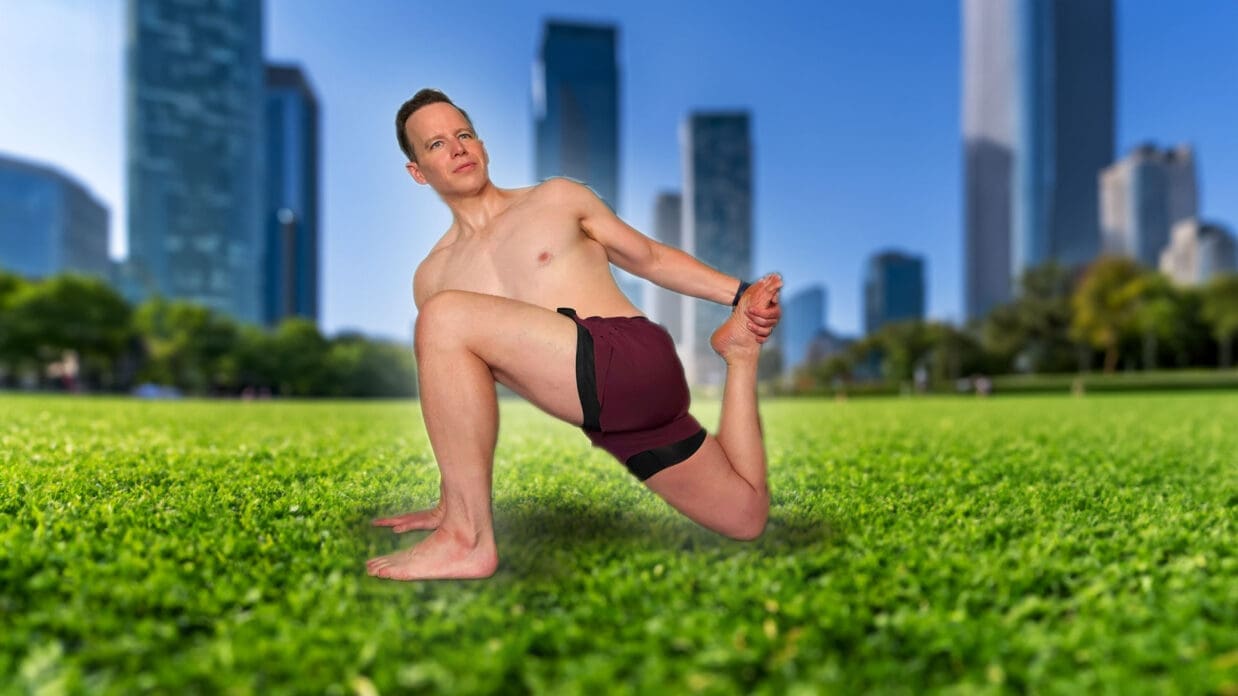Tell someone you’re a yoga teacher, and they’ll tell you they can’t touch their toes. I’m not sure when touching one’s toes became all that important, but it seems like a lot of people consider it a barrier to entry if they want to practice yoga.
So let’s climb that barrier…
Tight hips and hamstrings are directly tied to everything from low back pain to constipation. (It’s true!) There are also positive neurological effects of being more supple and pliable: reduced anxiety, improved circulation and greater endurance among them.
What’s more, our bodies carry everything that has ever happened to us: every trauma and every celebration. It’s stored in our tissues and organs sometimes as quite literal knots but more often as fissures, tension and blockages.
Q: How do I get more flexible?
A: Start where you are.
In our Eight Limbs of Yoga Deep Dive, we discussed Santosha (Contentment). It might sound obvious, but unless you are fully aware and accepting of where you are, you’ll never progress. And, frankly, you’ll get frustrated and probably quit.
When we accept something, it doesn’t mean a conditional acceptance. It means being extremely comfortable with our current state. I have been practicing yoga for nearly 30 years, and — even as an instructor — I am rarely the most flexible person in the room. There is always someone who looks better in a posture than I do. Always!
Some of that is their innate physiology: a bone and muscle structure that makes them inherently bendier, and some of it training and experience. The reason doesn’t matter and, frankly, neither does the result, because you’re not here for their practice. You’re here for yours.
Only when we go inside, experience the poses honestly and without judgement will things start to open up in a healthy, sustainable way. Lunges will deepen. Shoulders will loosen. Breaths will open.
If we focus on the folks around you who seem effortlessly twisted into all kinds of fancy shapes and try to look like them, we’ll never get there.
Wait… This sounds like a metaphor
You caught me. You might have heard me say this before… it’s never about the shape. Similarly, our journey toward more flexible bodies, while great for all of the reasons I mentioned above, is really about so much more.
Skyscrapers are constructed so they can bend and sway with hurricane-force winds and earthquakes: if they’re rigid, they’ll collapse.
Similarly, when we find opening and release in these spaces, we liberate our bodies from the loads they’ve been carrying and equip ourselves to better handle what lies ahead.
Vinyasa for Improved Flexibility
Any yoga practice will inevitably give you some degree of stretch in the hips, hamstrings, shoulders and back, but in this week’s class (recorded live on August 2, 2024), we take some extra time to explore the sticky spots. You’ll notice we move very (very) slowly through this sequence and hold a lot of the postures for several rounds of breath, which gives them some time to let go.
Meditation on Flexibility
Flexibility can’t be only physical. Being a responsible human in the world means practicing Santosha where we are and being open and available to new ideas when they arise.
Nothing that appears in this blog or on this website is intended to treat or diagnose any disorder, physical or otherwise. Always consult a physician before beginning any exercise program.
